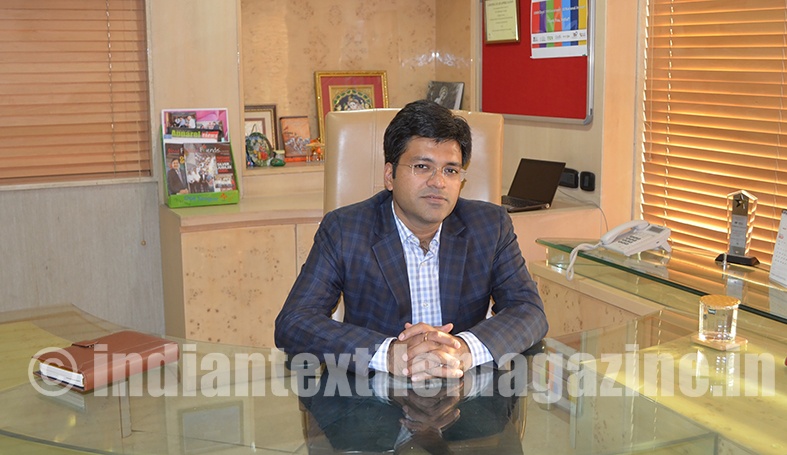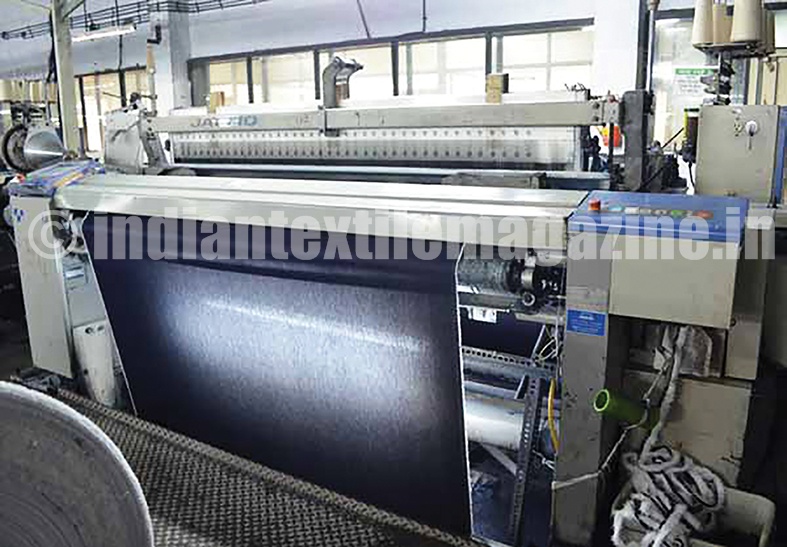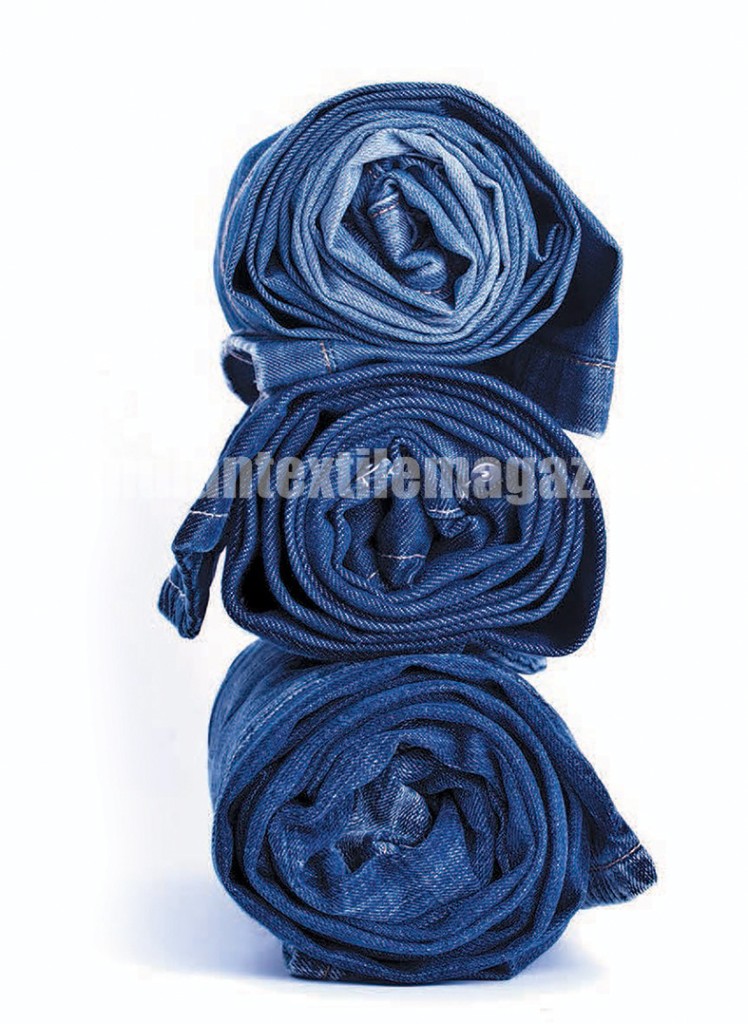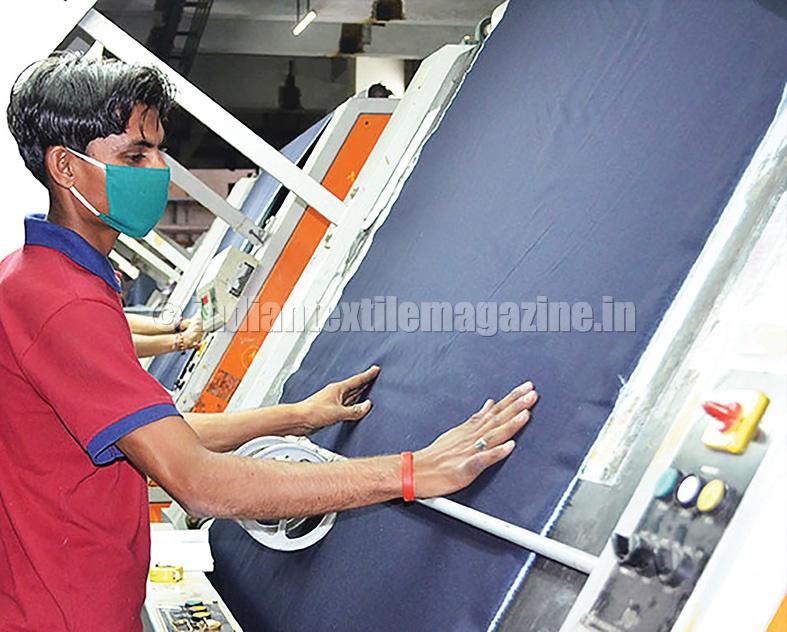To emerge fourth largest global denim maker
Nandan Denim is one of India’s fastest growing companies with a manufacturing capacity of 110 MMTPA (post expansion). The company also has 10 MMPA capacity for processing shirting fabric. Its revenues from operations increased from Rs. 1096.5 crores to Rs. 1156.7 crores registering a growth of 5.5 per cent in 2015-16.
Nandan Denim is part of the Ahmedabad-based Chiripal Group with its major presence in sectors like textiles, packaging, education and infrastructure.
Nandan Denim expanded its denim manufacturing capacity from 6 MMPA in FY04 to 71 MMPA in FY14 to a projected 110 MMPA in FY17. In FY14, it initiated its largest expansion in denim manufacturing capacity by nearly 40 MMPA, nearly 60 per cent of its existing capacity, in one stroke.
Following the expansion, Nandan Denim is likely to emerge as the fourth largest denim fabric manufacturer and the lowest cost denim manufacturer in the world. In FY14, the company invested in more than doubling its spinning capacity, from 54 TPD to 124 TPD. This enhanced its ability to provide raw material for its captive needs, from 50 per cent to 80-85 per cent. Also the yarn manufactured captively costs the company about 8-10 per cent less than the outsourced equivalent.
The Indian denim market is growing annually at about 18 per cent against the global average of 3-5 per cent. Assuming that this growth rate continues, India would need 2,000 mn metres of denim fabric to meet the fabric demand.
Interview with Mr. Deepak Chiripal, Director, Nandan Denim
What are the new trends in the denim fabric space?
Denim is a universal boundless fabric presenting new challenges and opportunities. There is a new trend emerging virtually every day in this area. Depending on end applications, denim is designed to provide a soft or rugged feel, deep dyed or light shaded (with or without the use of clean fabrics). The use of different yarns in weaving and the application of multiple finishing technologies help introduce new product varieties and fabric weight index.
Since fabric stretchability needs to be demonstrated across a longer period, there is a corresponding premium on product innovation. The fashion world is so dynamic and customer-specific that one cannot come to conclusions based on a single fabric. Nandan, with its integrated manufacturing facilities and enhanced operational competence, is well poised to seize the emerging denim-based opportunities. The company controls quality from the fibre stage till the product shipment, an advantage that is not shared by many.
Is there any advantage you have over competition following the recent addition of equipment?
Typically an OEM manufactures a machine keeping in mind the fashion trend and developments taking place in related functions, e.g., a loom manufacturer will design a machine in 2016 keeping in mind the developments in the fibre, spinning and fabric industries. From this perspective, anyone with the latest technology will enjoy an enormous flexibility in the selection of the right product mix according to the fashion or customer requirements. The economies of scale and scope make such manufacturers efficient and cost competitive. Such facilities will be better placed to address challenging customer deadlines and provide superior service. The reality is that some contemporary machines provide features that were non-existent even as five years ago, strengthening the owner’s relevance to the market.
How do you decide on product pricing? Do raw material cost movements impact profitability?
In an open economy, it is the demand-supply and market equilibrium that influences the price. If the product is available in abundance, it gets commoditised faster and this, in turn, depresses prices quicker. However, costs have their own connotations. What is cost for others may be equivalent to some cost plus reasonable margin for Nandan. The reason: economies of scale and scope.
Therefore, a player with access to the latest technologies and scale is usually insulated during a downturn. And in the case of a product that is scarce due to the ‘fashion factor’, prices will eventually be dictated by suppliers. In the case of commoditized products, the pricing power is generally not with manufacturers, and in the case of fashion products, pricing is mutually decided.
Post expansion, Nandan will be attractively placed to optimise the product mix through manufacturing flexibility derived from the state-of-the-art equipment. This will make it possible for the company to offer the complete range of products for denim and shirting fabrics.
Even as many spinners are establishing manufacturing facilities, there is a perception that it may have been a better option for Nandan to expand downstream without integration (spinning).
The advantages of being integrated ensure quality control from the beginning of the operation, utilizing the spinning competence to rationalize costs and exercising complete supply chain control to address challenging delivery schedules. If one did not possess integrated manufacturing facilities, certain customers would inevitably be lost as the manufacturer would be at the mercy of other spinners. We believe that integrated operations offer a cost advantage: the margin otherwise earned by the spinner would now accrue to the manufacturer.
When such expansions are funded at competitive financial costs, they expand spinning profitability and this operation becomes margin-accretive for the manufacturer.
How do you rate your product vis-à-vis your competition?
Apart from the law of demand and supply, it is the quality and service that a manufacturer offers that influences pricing. Nandan is a distinctive manufacturer offering the complete range of dressing solutions for the largest spread of customers for the intended application.
From our perspective, we are confident of our quality getting reflected in one of the highest customer retentions and repeat orders from them. Besides, we continue to periodically add new customers.
How do you intend to promote your product with additional capacities being added (by Nandan and competition)?
The domestic denim market has been growing at a CAGR of 15-18 per cent. The commerce portals are growing and making it possible to tap Tier-II and Tier-III towns. The international market is growing at a CAGR of 3-5 per cent. The consumption of the product is reasonably assured.
From a competitive perspective, we have one of the largest domestic distribution networks, which will make it possible to extend into unexplored markets (due to capacity constraint). In view of this, Nandan will not find it challenging to market additional production. Simultaneously, the addition of value-added products will enable Nandan to reach customers where it was earlier unable to match the quality parameters. Besides, the company intends to increase its share of exports through a focused approach that could widen marketing opportunities.
On the financial front, the company is leveraged. How does it intend to moderate risks?
Most of the risks are incurred during project execution. Once the additional capacity is commissioned and incremental profitability kicks in, in line with management intent, the implementation risks decline. Besides, with long-term debt at a competitive cost, the debt payout and funding cost remains affordable even during a downturn.
These factors ensure that the company remains committed to long-term value creation. I can assure the shareholders that the risk: reward ratio in our business continues to be favourable and whatever risks are evident are transitory in nature.
The company is strengthening its manufacturing competence for sustainable profits through customer product-market diversity. We are optimistic that this will yield favourable results starting from the short-term and extending well into the long-term.



